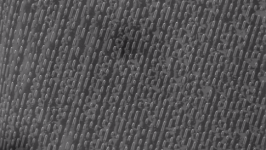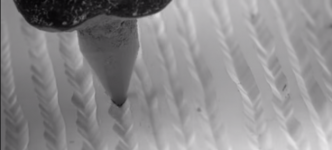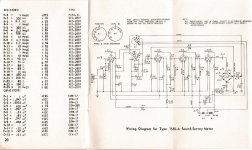Of course, my competition is not SY or SE, but the likes of Nelson Pass and Charles Hansen.
Since neither of us sells amplifiers, and in particular, I sell nothing related to audio besides a few magazine articles, that's a pretty safe statement.
I agree, no argument about laterals, although don't run them too hot or there are long-term degradation mechanisms.My remark was based on practical experience with huge PA systems. With enough safety margin, lateral Mosfets based amps are a lot, a lot safer. They are flat on tempco around 150mA... very good for class A operation range at normal levels, and... they like to be run hot.
I have been lucky to derate standard parts so that they don't fail, but it is very difficult to gauge this. I like to use DMOS as pass transistors or shunt regulator transistors, and probably came close to trouble when the design was particularly cost-challenged. But if they were failing I'd have heard about it, as some of the powered speaker systems shipped in the millions.
Although it is an asymmetrical-input design, the power amp section of the ancient NAD 3020 is a CFA. It looks pretty crude on paper but works very well. The intrinsic slew rates are also somewhat polarity-sensitive but fast enough (therefore symmetrical enough for bandlimited signals) to satisfy Keith Johnson, who said upon acquiring one from a friend while he waited for time to repair his own amp, "I didn't have to do anything to it to make it sound right".
And Erickson did this with 2N3055 and 2N2955 as the output devices.
The current On Semiconductor lists Ft as 2.5 MHz minimum.
The original RCA part was a hometaxial design with a minimum current gain of 5 at 10 amps and at 10 KHz, 1 amp could have a gain of 20.
So if they picked there transistor source they could expect decent results.
In repairing older amplifiers one needs to save old 2N3055/2N2955s or else the repaired unit may oscillate.
This is appropriate for the discussion & fascinating as well!
Incredible microscope view of a vinyl record playing in slow motion
Incredible microscope view of a vinyl record playing in slow motion
Attachments
Now previously I had posted this schematic of a General Radio sound level meter. I have a bunch of them and they all came in bad. I did ask if anyone cared to guess which part always failed. No one did. They use carbon composition resistors and in my oldest one I did replace the unit tied to the first stage plate as it was noisy enough it limited the lowest range. I had one unit with a shorted capacitor. As the capacitors were all metal and glass cased everyone other than that tested was within value.
Now if you look at the first stage you can see that the maximum plate current should be 50 uA as the plate runs at 10 volts it is even less.
Now just for Marce the unit is built on a phenolic board with inserted terminals. The PC boards of the day had too much leakage current for this application.
A close look at the schematic will show the power/range/battery test switch. It is a single layer phenolic switch. When anyone cleaned the switch or perhaps even the original lubricant that left a residue. With age and the close spacing of the common power lead to the B+ voltage this residue would drop the plate voltage to around 1 volt. The B+ test position would indicated a weak battery even with a good unit.
Yes all of the selector switches failed! Using a cleaning spray did not work. The solution was to remove the switches, give them an alcohol bath and then to carefully move the conduction rings retaining crimps a bit to increase the separation.
Now today when working with microamps we would use a guard ring. But there really are cases where special laminated base material is actually an issue.
BTY the meters were first introduce in April 1952. They still work well! Need to buy some more as a few folks want one!
ES
Now if you look at the first stage you can see that the maximum plate current should be 50 uA as the plate runs at 10 volts it is even less.
Now just for Marce the unit is built on a phenolic board with inserted terminals. The PC boards of the day had too much leakage current for this application.
A close look at the schematic will show the power/range/battery test switch. It is a single layer phenolic switch. When anyone cleaned the switch or perhaps even the original lubricant that left a residue. With age and the close spacing of the common power lead to the B+ voltage this residue would drop the plate voltage to around 1 volt. The B+ test position would indicated a weak battery even with a good unit.
Yes all of the selector switches failed! Using a cleaning spray did not work. The solution was to remove the switches, give them an alcohol bath and then to carefully move the conduction rings retaining crimps a bit to increase the separation.
Now today when working with microamps we would use a guard ring. But there really are cases where special laminated base material is actually an issue.
BTY the meters were first introduce in April 1952. They still work well! Need to buy some more as a few folks want one!
ES
Attachments
> Richard Heyser blamed the use of negative feedback in amps and preamps,
> for why they can 'measure' better than speakers, yet still make a sonic difference.
> I am pretty sure he was right, but I will keep on using negative feedback when
> I need good specs., which is most of the time, as always.
> Oh, the compromises we have to make in order to make commercial products.
> '-)
In that case, I'm sure you're working on at least maintaining your specs,
while decreasing your feedback.
> for why they can 'measure' better than speakers, yet still make a sonic difference.
> I am pretty sure he was right, but I will keep on using negative feedback when
> I need good specs., which is most of the time, as always.
> Oh, the compromises we have to make in order to make commercial products.
> '-)
In that case, I'm sure you're working on at least maintaining your specs,
while decreasing your feedback.
There are some howlingly disparate parts labeled as 3055. There was an article about them some years ago. One of the giveaways was the diameter of the glass seals on the base and emitter leads, and inside were very different die.The current On Semiconductor lists Ft as 2.5 MHz minimum.
The original RCA part was a hometaxial design with a minimum current gain of 5 at 10 amps and at 10 KHz, 1 amp could have a gain of 20.
So if they picked there transistor source they could expect decent results.
In repairing older amplifiers one needs to save old 2N3055/2N2955s or else the repaired unit may oscillate.
I have a 1984 magazine which I refer back to now and again to remind myself how far and yet nowhere we have come in hobby audio electronics. In that is an interesting JLH paper where he discusses DS and his slide into ultra objectivism. Given what was happening in audio journalism at the time you can appreciate Doug's view. IMO any 'view' he has is based on both Engineering and experience (A lot of his designs out there) but 30 years of people not listening and you can see why he seems grumpy.
Having spent an evening with Doug not too long ago, I can tell you that he
is not grumpy at all, although his writing style doesn't betray that.
as I never found an amp (or even an IC) sounding exactly the same than an other of different brand.
I wouldn't have pegged you as an op-amp roller.
I wouldn't have pegged you...
Wait, what?
...as an op-amp roller.
Whew!
Since neither of us sells amplifiers...
What's this? Chopped liver?
An externally hosted image should be here but it was not working when we last tested it.
se
I would like to point out that I design amps, and haven't built or sold anything of my own for decades.
I realize that in some hi fi outlets, there are cynical salespeople who talk the way that SY refers to me, but I don't typically know or ever interact with these people in that sort of way.
I'm an idealist, trying to make the perfect amp, comparable to my first triode experiences about 50 years ago. I can only use what parts are available, (although I push pretty hard for good ones) and some of the designs that I do are purposely cost-effective, so I can only do so much. Parasound makes some pretty good products, but I have done better personally. I just don't build custom amps/preamps anymore. I am just too old to do this for the amount of effort involved. This was not so true, 25-40 years ago. Then I made a number of custom designs, and many came out pretty well, perhaps better than what I am using today, except for the Blowtorch-Vendetta phono combination that I still use. Oh, well.
I realize that in some hi fi outlets, there are cynical salespeople who talk the way that SY refers to me, but I don't typically know or ever interact with these people in that sort of way.
I'm an idealist, trying to make the perfect amp, comparable to my first triode experiences about 50 years ago. I can only use what parts are available, (although I push pretty hard for good ones) and some of the designs that I do are purposely cost-effective, so I can only do so much. Parasound makes some pretty good products, but I have done better personally. I just don't build custom amps/preamps anymore. I am just too old to do this for the amount of effort involved. This was not so true, 25-40 years ago. Then I made a number of custom designs, and many came out pretty well, perhaps better than what I am using today, except for the Blowtorch-Vendetta phono combination that I still use. Oh, well.
Despite I tried my best to make the fortune of PMi and AD ?I wouldn't have pegged you as an op-amp roller.
Last edited:
What's this? Chopped liver?
se
I stand corrected. Headphone amp, though?
Having spent an evening with Doug not too long ago, I can tell you that he is not grumpy at all, although his writing style doesn't betray that.
Doug and I both responded to an infuriating piece by an RF engineer, one Anthony New, some years back in Electronics World (UK). At one point in his editor-truncated letter Doug suggested that perhaps he should start writing about RF. My letter was printed nearly unedited but was a trifle nasty, and we were admonished by Ian Hickman who lamented the trend toward incivility in printed discourse.
New ranted about how harmonic distortion numbers were stupid, and went on to talk about IM distortion as if audio people had never heard of it, let alone measured it. It was the usual rant from the perspective of a non-audio engineer, informing all of us audio folk who were simply too dull for words.
No other choice: mixing desks with a huge number of them...At least you tried them Esperado, and you found out what they sounded like. Often, quite good, but then:... '-)
WW did not, at first, even PUBLISH my letter to Doug Self on cap differences. Later, when I got the same letter printed in 'HFN', WW relented and published my letter. The best response for that series of LTE's was from Lipshitz, which went something like: Your measurements are OK, your math is OK, but what you have found doesn't matter. Sound familiar today? '-)
Sound familiar today? '-)
Keep the true believers believing!
- Status
- Not open for further replies.
- Home
- Member Areas
- The Lounge
- John Curl's Blowtorch preamplifier part II


